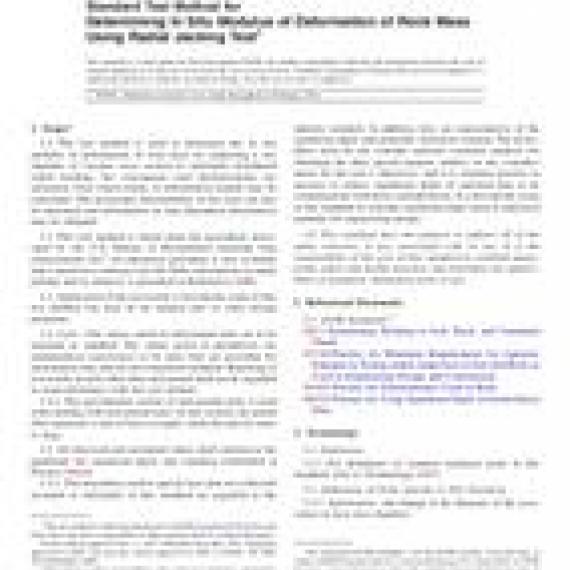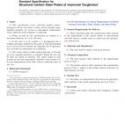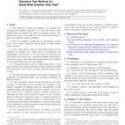No products
ASTM D4506-13e1
ASTM D4506-13e1 Standard Test Method for Determining In Situ Modulus of Deformation of Rock Mass Using Radial Jacking Test
standard by ASTM International, 11/01/2013
Full Description
1.1This test method is used to determine the in situ modulus of deformation of rock mass by subjecting a test chamber of circular cross section to uniformly distributed radial loading; the consequent rock displacements are measured, from which elastic or deformation moduli may be calculated. The anisotropic deformability of the rock can also be measured and information on time-dependent deformation may be obtained.
1.2This test method is based upon the procedures developed by the U.S. Bureau of Reclamation featuring long extensometers (1).2 An alternative procedure is also available and is based on a reference bar (2). More information on radial jacking and its analysis is presented in References (3-8).
1.3Application of the test results is beyond the scope of this test method, but may be an integral part of some testing programs.
1.4Units-The values stated in inch-pound units are to be regarded as standard. The values given in parentheses are mathematical conversions to SI units that are provided for information only and are not considered standard. Reporting of test results in units other than inch-pound shall not be regarded as nonconformance with this test method.
1.4.1The gravitational system of inch-pound units is used when dealing with inch-pound units. In this system, the pound (lbf) represents a unit of force (weight), while the unit for mass is slugs.
1.5All observed and calculated values shall conform to the guidelines for significant digits and rounding established in Practice D6026.
1.5.1The procedures used to specify how data are collected/recorded or calculated, in this standard are regarded as the industry standard. In addition, they are representative of the significant digits that generally should be retained. The procedures used do not consider material variation, purpose for obtaining the data, special purpose studies, or any considerations for the users objectives; and it is common practice to increase or reduce significant digits of reported data to be commensurate with these considerations. It is beyond the scope of this standard to consider significant digits used in analytical methods for engineering design.
1.6This standard does not purport to address all of the safety concerns, if any, associated with its use. It is the responsibility of the user of this standard to establish appropriate safety and health practices and determine the applicability of regulatory limitations prior to use.


































